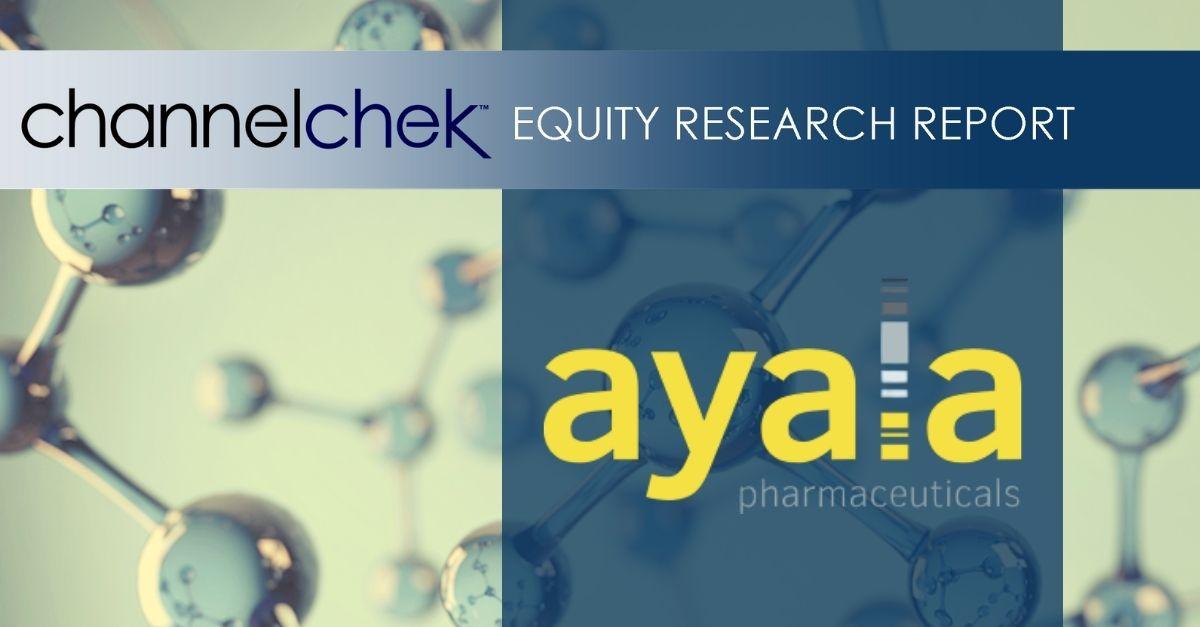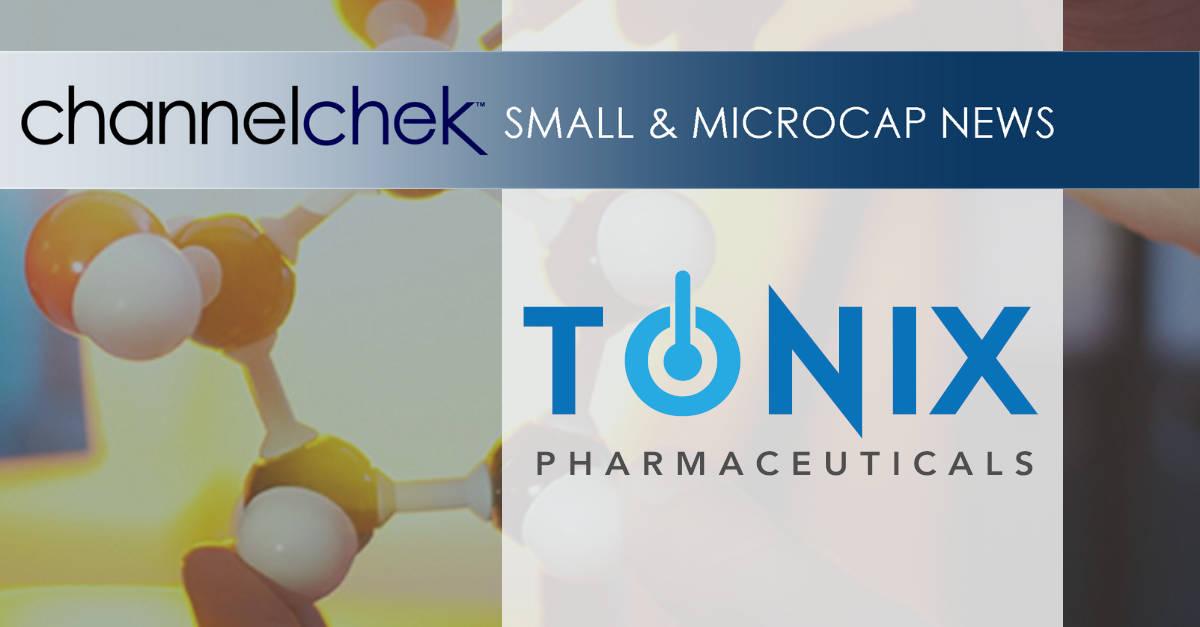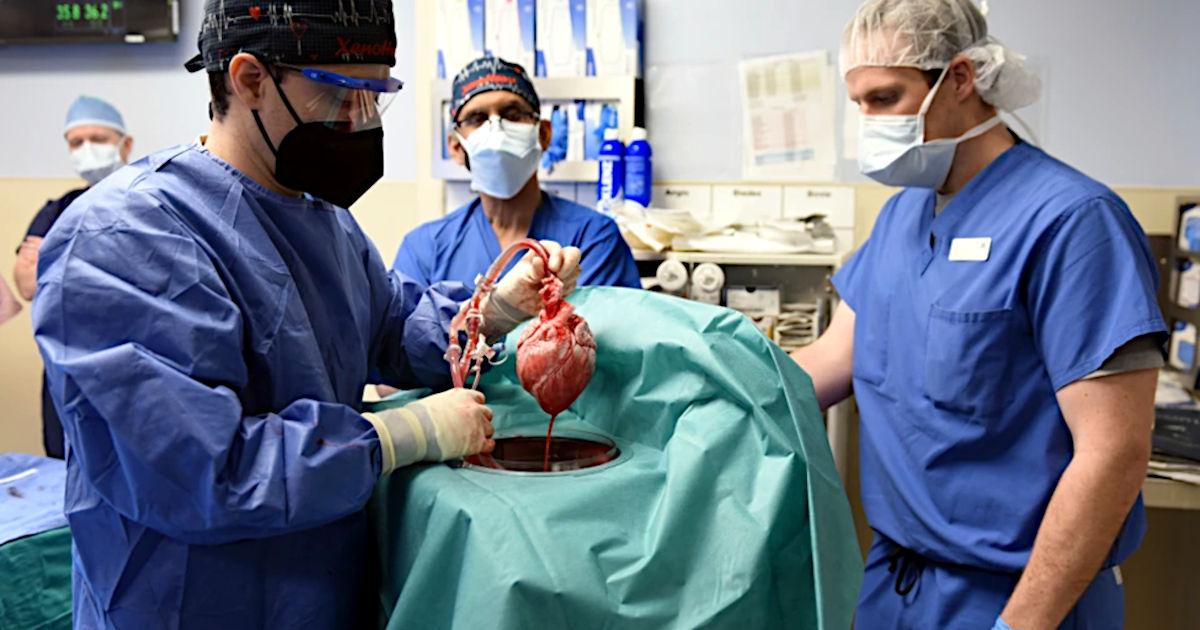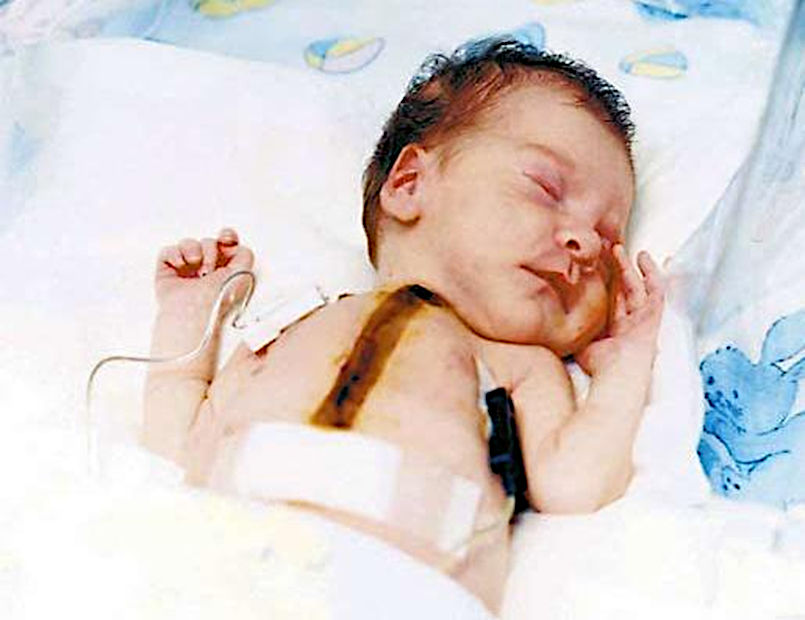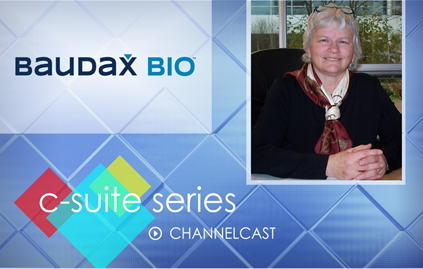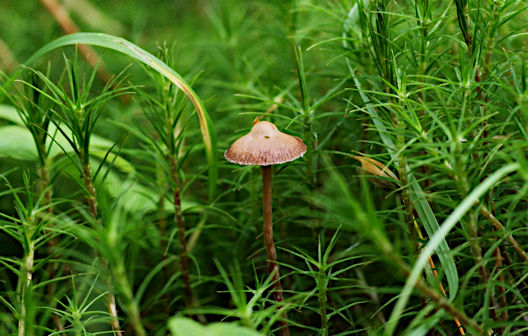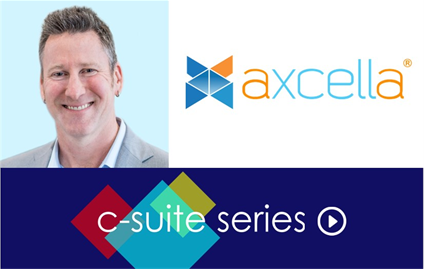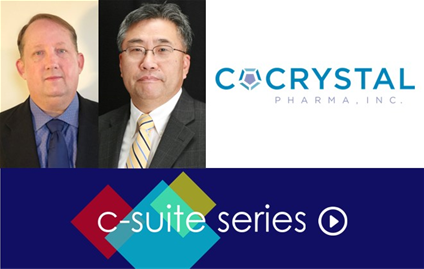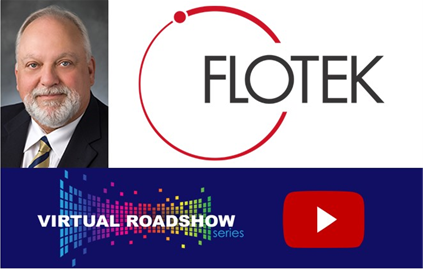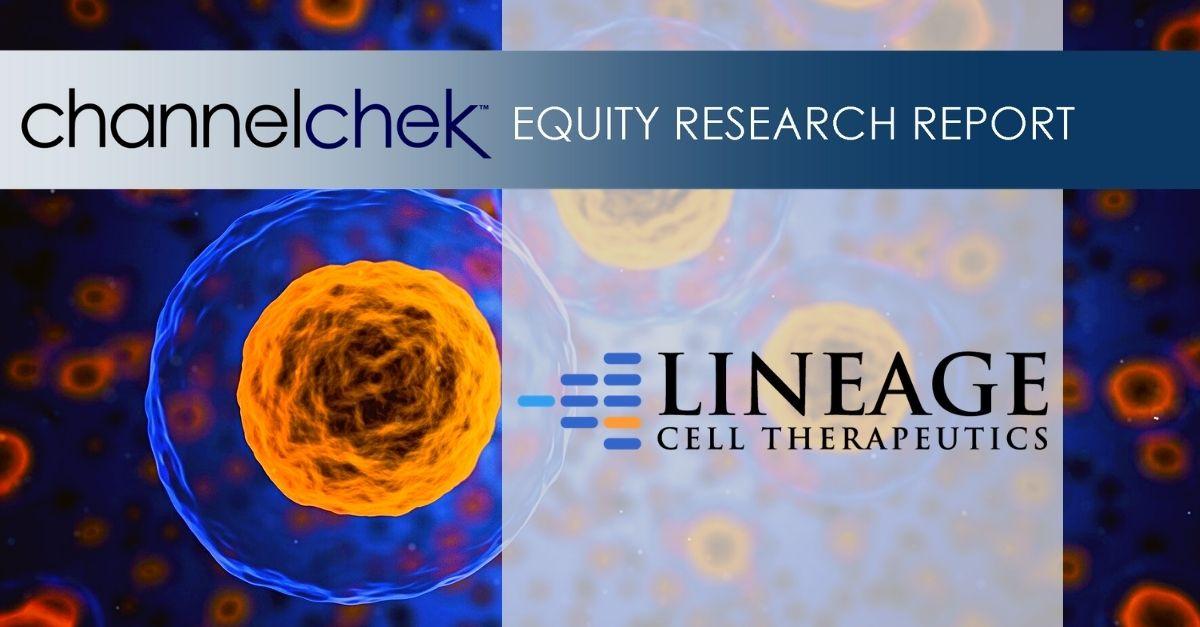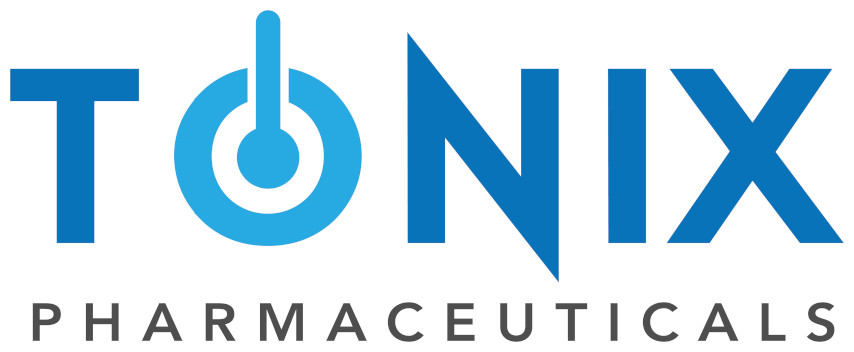
Tonix Pharmaceuticals Reports Fourth Quarter and Full Year 2021 Financial Results and Operational Highlights
Research, News, and Market Data on Tonix Pharmaceuticals
Immunology and CNS Programs Entering the Clinic in 2022 for Organ Transplantation, Cocaine Intoxication, Fibromyalgia, PTSD, Migraine Headache and Binge Eating Disorder
Covid-19 Programs Include Upcoming Phase 2 Trial in Long Covid, Results of First-in-Human T Cell Immunity Skin Test and New Versions of Our Live Virus Covid-19 Vaccine That Express Spike Proteins From the Omicron and BA.2 Variants
Expansion of Internal Research and Development Capabilities Underway to Accelerate Infectious Disease Programs and Prepare for Future Pandemic Responses
Orphan-Drug Designation Granted for TNX-2900 (Intranasal Potentiated Oxytocin) for Prader-Willi Syndrome
Cash and Cash Equivalents Totaled Approximately $179 Million at December 31, 2021
CHATHAM, N.J., March 14, 2022 (GLOBE NEWSWIRE) — Tonix Pharmaceuticals Holding Corp. (Nasdaq: TNXP) (Tonix or the Company), a clinical-stage biopharmaceutical company, today announced financial results for the fourth quarter and full year ended December 31, 2021, and provided an overview of recent operational highlights.
“2021 was an important year for Tonix as we delivered on several important milestones to advance our rich pipeline of immunology, central nervous system (CNS) and infectious disease product candidates,” said Seth Lederman, M.D., Chief Executive Officer of Tonix. “Our diversified pipeline was built through internal research and development, business development and strategic collaborations. Already in 2022, we have shared results of animal studies of monoclonal antibody TNX-1500 in organ transplantation and announced FDA’s award of Orphan-Drug designation for TNX-2900 for Prader Willi syndrome. We look forward to pharmacogenomic analyses, in conjunction with topline data, for the Phase 3 RALLY study of TNX-102 SL in fibromyalgia in the first quarter of 2022.”
Dr. Lederman continued, “Through acquisitions and the continued buildout of in-house R&D capabilities, Tonix is strengthening its capabilities to develop a broad infectious disease portfolio of product candidates, led by TNX-801 which is a live virus vaccine for smallpox and monkeypox, that is based on horsepox, which is our recombinant pox virus platform (RPV). Also based on the RPV are next-generation vaccine candidates to prevent Covid-19, including TNX-1840 and TNX-1850 which are live virus vaccines designed to express the omicron and BA.2 variants of the spike protein. We look forward to starting a Phase 2 study of TNX-102 SL for Long Covid and reporting topline data from the ongoing first-in-human study of TNX-2100, a diagnostic skin test for T cell immunity to SARS-CoV-2, in the first half of 2022.”
Gregory Sullivan, M.D., Chief Medical Officer of Tonix said, “In 2022, we expect to initiate several clinical trials. We intend to start a Phase 1 study of TNX-1500, a humanized monoclonal antibody with several potential indications including the prevention of organ transplant rejection and treatment of autoimmune disorders. Within our CNS pipeline, we expect to start a Phase 2 study of FDA Breakthrough Therapy-designated product candidate TNX-1300 (recombinant cocaine esterase) for cocaine intoxication in the emergency room setting. We also expect to start three trials for TNX-102 SL (sublingual cyclobenzaprine) including: a confirmatory Phase 3 study for the management of fibromyalgia, a Phase 2 study for the treatment of PTSD, and a Phase 2 study for the treatment of Long Covid. Finally, in 2022 we intend to start a Phase 2 study of TNX-1900 for the treatment of migraine and an investigator-initiated Phase 2 study of TNX-1900 for binge eating disorder.”
Recent Highlights—Key Product Candidates*
Immunology Pipeline
TNX-1500 (anti-CD40L monoclonal antibody): third generation monoclonal antibody for prophylaxis of organ transplant rejection and treating autoimmune disorders.
- Tonix expects to start a Phase 1 study in the second half of 2022. Preliminary results from ongoing experiments in heart and kidney transplants in non-human primates at Massachusetts General Hospital indicate that TNX-1500 appears to have monotherapy efficacy in promoting rejection-free transplant organ acceptance and no evidence of thrombosis has been observed.
TNX-1700 (stabilized recombinant trefoil factor 2, or rTFF2): biologic for gastric and colorectal cancers
- In December 2021, Tonix announced a research collaboration with Columbia University focused on advancing TNX-1700 in the treatment of gastric and colorectal cancers. Tonix optioned worldwide rights to develop and commercialize products related to Columbia’s rTFF2 technology, and key patent claims have recently been issued in the U.S. The new project, “Development of rTFF2-Based Therapy to Enhance Immuno-Oncology Treatments,” is the first sponsored research project of this collaboration. The agreement with Columbia University gives Tonix the option to exclusively license new therapeutic candidates and other technologies that arise from the research collaboration for further development. TNX-1700 is in the preclinical stage of development.
Central Nervous System (CNS) Pipeline
TNX-1300 (recombinant double mutant cocaine esterase): biologic for life-threatening cocaine intoxication
- Tonix expects to initiate a Phase 2 open-label safety study of TNX-1300 in an emergency room setting in the first half of 2022. TNX-1300 was licensed from Columbia University and a positive Phase 2a study of volunteer cocaine users in a controlled laboratory setting has been completed. TNX-1300 has been granted Breakthrough Therapy designation by the U.S. Food and Drug Administration (FDA).
TNX-102 SL (cyclobenzaprine HCl sublingual tablets): small molecule for the management of fibromyalgia (FM)
- Tonix expects to report topline data from its second Phase 3 study, RALLY, in the first quarter of 2022. Tonix reported interim analysis of RALLY in July 2021 in which the independent data monitoring committee recommended stopping the study for futility. The Company therefore stopped enrollment of new participants while continuing those participating at that time to completion. Tonix plans to employ pharmacogenomic (PGx) techniques to compare the RALLY and RELIEF study populations, which may provide a path to precision medicine-based companion diagnostics for TNX-102 SL in FM.
- Tonix expects to initiate a new Phase 3 study of TNX-102 SL in FM in the first half of 2022. The Company will use the results of RALLY, including the PGx data, to potentially improve the design of this study.
- Tonix reported positive results from the Phase 3 RELIEF study for the management of fibromyalgia in December 2020.
TNX-102 SL for the treatment of Posttraumatic Stress Disorder (PTSD)
- Tonix has completed a meeting with the FDA to discuss potential new endpoints for the treatment of PTSD and expects to begin enrolling a Phase 2 study of TNX-102 SL in police in Kenya in the first half of 2022. The new PTSD study will use one month look-back CAPS-5 as the primary endpoint rather than one week look-back.
TNX-102 SL for the treatment of Long Covid, also known as Post-Acute Sequelae of COVID-19 (PASC)
- The Company intends to initiate a Phase 2 study in patients with Long Covid in the first half of 2022, pending clearance of an Investigational New Drug (IND) application. The Phase 2 study will focus on a subset of Long Covid patients whose symptoms overlap with those of fibromyalgia.
TNX-1900 (intranasal potentiated oxytocin): small peptide for migraine, craniofacial pain, insulin resistance and related disorders, and binge eating disorder
- In November 2021, Tonix announced it received IND clearance from the FDA to support the initiation of a Phase 2 study of TNX-1900 for the prevention of migraine headache in chronic migraineurs. The 505(b)(2) pathway for FDA approval is expected to be acceptable for this program, which is available to new formulations of an approved drug. The Company expects to begin enrollment in the second half of 2022.
- In March 2022, Tonix announced an agreement with Massachusetts General Hospital to evaluate TNX-1900 in an investigator-initiated Phase 2 clinical trial as a potential treatment for patients with binge eating disorder. The Phase 2 clinical trial is expected to start in the second half of 2022.
- Tonix’s potentiated formulation includes magnesium (Mg), which has been reported to potentiate the binding of oxytocin to the oxytocin receptor. Further evidence for the role of Mg in potentiating the effects of oxytocin at the oxytocin receptor were published by a third party1.
TNX-2900 (intranasal potentiated oxytocin): small peptide for the treatment of Prader-Willi syndrome (PWS)
- In March 2022, the FDA granted the Company Orphan-Drug designation for TNX-2900 for the treatment of PWS.
- In February 2022, Tonix entered into a sponsored research agreement with Inserm (the French National Institute of Health and Medical Research) and Aix-Marseille Université to study oxytocin in the genetically engineered mouse model of Prader-Willi syndrome, a rare genetic disorder that causes distinct, but related pathological eating disorders in adults and newborns. In adults, PWS causes hyperphagia, or pathological over-eating, which leads to obesity and other complications associated with significant mortality. In newborns, PWS causes a deficiency in suckling, which can lead to low muscle tone and failure to thrive, and has been shown to be normalized by oxytocin treatment.
TNX-601 CR (tianeptine oxalate and naloxone controlled-release tablets): small molecule for the treatment of major depressive disorder, PTSD and neurocognitive dysfunction associated with corticosteroid use.
- Based on official minutes from a pre-IND meeting with the FDA, the Company expects to initiate a Phase 2 study for the treatment of major depressive disorder (depression) in the first quarter of 2023. Tonix plans to initiate a pharmacokinetic study in the third quarter of 2022. Tonix previously completed a Phase 1 trial for formulation development outside of the U.S.
Infectious Disease Pipeline
TNX-801 (live horsepox virus vaccine for percutaneous administration): smallpox and monkeypox vaccine designed as a single-administration vaccine to elicit T cell immunity
- Tonix previously reported protection of non-human primates from a monkeypox challenge2. TNX-801 is less virulent than traditional vaccinia vaccines in mice.3
TNX-1840 /-1850 (live virus vaccines based on Tonix’s recombinant pox virus vector): COVID-19 vaccines designed as a single-administration vaccine to elicit T cell immunity
- Because the omicron variant has out-competed the ancestral Wuhan strain, Tonix is now planning new versions of the TNX-1800 vaccine: TNX-1840 and TNX-1850, that are designed to express spike protein from the omicron and BA.2 variants, respectively. TNX-1840 and TNX-1850 are next-generation COVID-19 vaccines using live virus technology, which is known to primarily elicit a T cell response believed to result in longer durability and the blocking of forward transmission.
TNX-3500 (sangivamycin): antiviral inhibitor of SARS-CoV-2 for the treatment of COVID-19 and potential other viral disorders
- In November 2021, Tonix announced the publication of “Sangivamycin is highly effective against SARS-CoV-2 in vitro and has favorable drug properties,” in JCI Insight. The paper includes in vitro studies conducted by the National Institutes of Allergy and Infectious Diseases that show sangivamycin, the active pharmaceutical ingredient in TNX-3500, is a potent antiviral against SARS-CoV-2, the cause of COVID-19, and suppresses viral replication in tissue culture with greater potency than remdesivir, the active pharmaceutical ingredient of Gilead Sciences, Inc.’s Veklury®. When tested in combination with remdesivir, both drugs had additive rather than competitive effect against SARS-CoV-2.
- Tonix plans to conduct further nonclinical animal studies of TNX-3500.
TNX-3600: COVID-19 therapeutic; fully human monoclonal antibody platform
- In September 2021, Tonix expanded its research collaboration with Columbia University focused on studying immune responses to COVID-19 in healthy volunteers who have recovered from COVID-19 or were asymptomatic, as well as studying in vitro T cell and antibody responses to SARS-CoV-2, the virus that causes COVID-19. The research is designed to fill in important gaps in comprehensive understanding of immune responses to COVID-19, and to provide a foundation for tailoring vaccines and therapeutics to appropriate individuals with precision medicine. Specifically, the researchers will study T cell and antibody responses in a variety of ways, including at the cellular level by stimulating T cells in vitro with CoV-2 antigens and by generating fully human monoclonal antibodies against SARS-CoV-2. Tonix believes that this research has the potential to lead to the isolation, characterization and cloning of therapeutically relevant fully human neutralizing monoclonal antibodies to SARS-CoV-2.
TNX-3700: COVID-19 mRNA vaccine candidate using a zinc nanoparticle (ZNP) formulation
- In January 2022, Tonix announced an exclusive option and research collaboration with Kansas State University (K-State) to develop ZNP mRNA vaccines that replace the lipid nanoparticle (LNP) technology in current COVID-19 vaccines. The new ZNP technology has the potential to confer increased stability to mRNA vaccines over a wide range of temperatures, addressing limits to rapid global deployment. Under the research agreement, K-State will advance preclinical development of a new ZNP mRNA vaccine to protect against COVID-19 based on the spike protein from SARS-CoV-2.
TNX-2100 (diagnostic skin test): SARS-CoV-2 epitope peptide mixtures for intradermal administration to measure the delayed-type hypersensitivity (DTH) reaction to SARS-CoV-2
- Tonix initiated enrollment in a first-in-human, dose-finding clinical study for TNX-2100, which is designed to measure functional in vivo T cell immunity to SARS-CoV-2, with results expected in the first half of 2022.
- TNX-2100 comprises three different mixtures of synthetic peptides (TNX-2110, -2120 and -2130), which has the potential to serve as: 1) a biomarker for T cell protective immunity and durability of vaccine protection; 2) a personalized approach for vaccine boosters; 3) a method to stratify participants in COVID-19 vaccine trials with a more complete picture of immune status; 4) an endpoint in COVID-19 vaccine trials for vaccines that elicit T cell immunity, and 5) public health surveillance.
*All of Tonix’s product candidates are investigational new drugs or biologics and have not been approved for any indication.
2021 Highlights—Facilities and Corporate
- In December 2021, Tonix was added to the Nasdaq Biotechnology Index as part of Nasdaq’s annual reconstitution process.
- In June 2021, Tonix was added to the broad-market Russell 3000® index and the small-cap Russell 2000® Index as part of the annual reconstitution of the Russell stock indexes.
- R&D Center (RDC): In October 2021, Tonix completed the acquisition of its 48,000 square foot research and development center (RDC) in Frederick, Md. The facility is operational and will focus on the development of vaccines and antiviral drugs against COVID-19, its variants, and other infectious diseases. The RDC facility is currently biosafety level 2 (BSL-2), but Tonix plans to make appropriate upgrades and seek certification for BSL-3 so that research may be conducted on live SARS-CoV-2 and other pathogens.
- Advanced Development Center (ADC): In August 2021, Tonix commenced construction on the ADC for the development and manufacturing of Good Manufacturing Practice, or GMP, live-virus vaccines to support Phase 1 and 2 clinical trials. The facility, located in the New Bedford Business Park in Dartmouth, Mass., is planned to be BSL-2 and expected to be partially operational in the first half of 2022.
- Commercial Manufacturing Center (CMC): Tonix plans to build the CMC in Hamilton, Mont. where it purchased approximately 44 acres of land. The CMC will focus on developing and manufacturing commercial scale live-virus vaccines and is also intended to be BSL-2. Site enabling work is expected to be initiated for the CMC in 2022.
1Meyerowitz, J.G., Robertson, M.J., Barros-Álvarez, X. et al. The oxytocin signaling complex reveals a molecular switch for cation dependence. Nat Struct Mol Biol (2022). https://doi.org/10.1038/s41594-022-00728-4
2Noyce, RS, et al. Synthetic Chimeric Horsepox Virus (scHPXV) Vaccination Protects Macaques from Monkeypox* Presented as a poster at the American Society of Microbiology BioThreats Conference – January 29, 2020, Arlington, VA. (https://content.equisolve.net/tonixpharma/media/10929ac27f4fb5f5204f5cf41d59a121.pdf )
3Noyce RS, et al. Construction of an infectious horsepox virus vaccine from chemically synthesized DNA fragments. PLoS One. 2018 Jan 19;13(1): e0188453.
Recent Highlights–Financial
As of December 30, 2021, Tonix had $178.7 million of cash and cash equivalents, compared to $77.1 million as of December 31, 2020. Subsequent to December 31, 2021, the Company sold 15.6 million shares of common stock in at-the-market offerings (ATM) sales under a Sales Agreement with A.G.P./Alliance Global Partners, for net proceeds of approximately $4.3 million. Additionally, the Company sold 22.0 million shares of common stock under the Purchase Agreement with Lincoln Park for net proceeds of approximately $4.5 million.
Cash used in operations was approximately $75.6 million for the full year ended December 31, 2021, compared to $48.6 million for the full year ended December 31, 2020. The increase in primarily due to an increase in research and development (R&D) and general and administrative (G&A) activities, described below.
Fourth Quarter 2021 Financial Results
R&D expenses for the fourth quarter of 2021 were $22.3 million, compared to $12.1 million for the same period in 2020. This increase is predominately due to increased clinical expenses of $1.9 million, increased manufacturing expenses of $2.1 million, non-clinical expenses of $2.4 million, employee-related expenses of $2.3 million and regulatory/legal expenses of $0.6 million. We expect R&D expenses to increase during 2022 as we move our clinical development programs forward and continue to invest in our development pipeline.
G&A expenses for the fourth quarter of 2021 were $7.3 million, compared to $4.9 million for the same period in 2020. The increase is primarily due to employee-related expenses of $1.8 million.
Net loss available to common stockholders was $29.6 million, or $0.07 per share, basic and diluted, for the fourth quarter of 2021, compared to net loss of $17.0 million, or $0.10 per share, basic and diluted, for the fourth quarter of 2020. The basic and diluted weighted average common shares outstanding for the fourth quarter of 2021 was 451,209,777, compared to 163,873,489 shares for the fourth quarter of 2020.
Full Year 2021 Financial Results
R&D expenses for full year 2021 were $68.8 million, compared to $36.2 million for the same period in 2020. This increase is predominately due to increased non-clinical expenses of $14.0 million, manufacturing expenses of $10.9 million, employee-related expenses of $5.3 million and regulatory/legal expenses of $1.9 million. We expect R&D expenses to increase during 2022 as we move our clinical development programs forward and continue to invest in our development pipeline.
G&A expenses for full year 2021 were $23.5 million, compared to $14.4 million for the same period in 2020. The increase is primarily due to employee-related expenses of $4.9 million, an increase in legal fees of $0.7 million due to increased patent prosecution costs, an increase in investor relations/public relations expenses of $0.6 million, an increase in financial reporting expenses of $1.2 million, and an increase in insurance premiums of $0.4 million.
Net loss available to common stockholders was $92.3 million, or $0.26 per share, basic and diluted, for full year 2021, compared to net loss of $52.2 million, or $0.55 per share, basic and diluted, for full year 2020. The basic and diluted weighted average common shares outstanding for full year 2021 was 360,215,323, compared to 94,591,715 shares for full year 2020.
About Tonix Pharmaceuticals Holding Corp.
Tonix is a clinical-stage biopharmaceutical company focused on discovering, licensing, acquiring and developing therapeutics and diagnostics to treat and prevent human disease and alleviate suffering. Tonix’s portfolio is composed of immunology, central nervous system (CNS) and infectious disease product candidates. Tonix’s immunology portfolio includes biologics to address organ transplant rejection, autoimmunity and cancer, including Tonix’s lead immunology candidate, TNX-15001, is a humanized monoclonal antibody targeting CD40 ligand being developed for the prevention of allograft rejection and the treatment of autoimmune diseases. A Phase 1 study of TNX-1500 is expected to start in the second half of 2022. The Company’s CNS portfolio includes both small molecules and biologics to treat pain, neurologic, psychiatric and addiction conditions. Tonix’s lead CNS candidate, TNX-102 SL2, (cyclobenzaprine HCl sublingual tablets), is a small molecule drug in mid-Phase 3 development for the management of fibromyalgia, with a new Phase 3 study expected to start in the first half of 2022. TNX-102 SL is also being developed to treat Long COVID, a chronic post-COVID-19 condition. Tonix expects to initiate a Phase 2 study in Long COVID in the first half of 2022. TNX-13003 is a biologic designed to treat cocaine intoxication that is expected to start a Phase 2 trial in the first half of 2022. Tonix’s infectious disease pipeline includes a vaccine in development to prevent smallpox, next-generation vaccines to prevent COVID-19 and an antiviral to treat COVID-19. Tonix’s lead vaccine program is TNX-801 (live horsepox virus for percutaneous administration) for preventing smallpox and monkeypox4. Horsepox is also the basis for Tonix’s recombinant pox vaccine (RPV) platform. Tonix’s lead vaccine candidates for COVID-19, TNX-1840 and TNX-18505, are live virus vaccines in development based on the RPV platform. Finally, TNX-35006 (sangivamycin, i.v. solution) is a small molecule antiviral drug to treat acute COVID-19 and is in the pre-IND stage of development.
1TNX-1500 is an investigational new biologic at the pre-IND stage of development and has not been approved for any indication.
2TNX-102 SL is an investigational new drug and has not been approved for any indication.
3TNX-1300 is an investigational new biologic and has not been approved for any indication.
4TNX-801 is an investigational new biologic at the pre-IND stage of development and has not been approved for any indication.
5TNX-1840 and TNX-1850 are investigational new biologics at the pre-IND stage of development and have not been approved for any indication. TNX-1840 and TNX-1850 are designed to express the spike protein of SARS-CoV-2 from omicron and BA.2 variants, respectively, based on the experience from TNX-1800, which expresses the spike protein from the ancestral Wuhan strain.
6TNX-3500 is an investigational new drug at the pre-IND stage of development and has not been approved for any indication.
This press release and further information about Tonix can be found at www.tonixpharma.com.
Forward Looking Statements
Certain statements in this press release are forward-looking within the meaning of the Private Securities Litigation Reform Act of 1995. These statements may be identified by the use of forward-looking words such as “anticipate,” “believe,” “forecast,” “estimate,” “expect,” and “intend,” among others. These forward-looking statements are based on Tonix’s current expectations and actual results could differ materially. There are a number of factors that could cause actual events to differ materially from those indicated by such forward-looking statements. These factors include, but are not limited to, the risks related to the failure to obtain FDA clearances or approvals and noncompliance with FDA regulations; delays and uncertainties caused by the global COVID-19 pandemic; risks related to the timing and progress of clinical development of our product candidates; our need for additional financing; uncertainties of patent protection and litigation; uncertainties of government or third party payor reimbursement; limited research and development efforts and dependence upon third parties; and substantial competition. As with any pharmaceutical under development, there are significant risks in the development, regulatory approval, and commercialization of new products. Tonix does not undertake an obligation to update or revise any forward-looking statement. Investors should read the risk factors set forth in the Company’s Annual Report on Form 10-K and periodic reports filed with the SEC. All Tonix’s forward-looking statements are expressly qualified by all such risk factors and other cautionary statements. The information set forth herein speaks only as of the date thereof.
TONIX PHARMACEUTICALS HOLDING CORP.
CONDENSED CONSOLIDATED STATEMENTS OF OPERATIONS
(Unaudited, In Thousands, Except Share and Per Share Amounts)
| |
|
|
Full Year Ended |
|
|
|
Three Months Ended |
|
| |
|
|
December 31, |
|
|
|
December 31, |
|
| |
|
|
2021 |
|
|
|
2020 |
|
|
|
2021 |
|
|
|
2020 |
|
| Costs and expenses |
|
|
|
|
|
|
|
|
|
|
|
|
|
|
|
|
| Research and development |
|
$ |
68,838 |
|
|
$ |
36,157 |
|
|
$ |
22,296 |
|
|
$ |
12,097 |
|
| General and administrative |
|
|
23,474 |
|
|
|
14,354 |
|
|
|
7,264 |
|
|
|
4,926 |
|
| Total costs and expenses |
|
|
92,312 |
|
|
|
50,511 |
|
|
|
29,560 |
|
|
|
17,023 |
|
| Operating loss |
|
|
(92,312 |
) |
|
|
(50,511 |
) |
|
|
(29,560 |
) |
|
|
(17,023 |
) |
| Interest income, net |
|
|
25 |
|
|
|
48 |
|
|
|
7 |
|
|
|
2 |
|
| Net loss |
|
$ |
(92,287 |
) |
|
$ |
(50,463 |
) |
|
$ |
(29,553 |
) |
|
$ |
(17,021 |
) |
| Warrant deemed dividend |
|
|
— |
|
|
|
(451 |
) |
|
|
— |
|
|
|
— |
|
| Preferred stock deemed dividend |
|
|
— |
|
|
|
(1,260 |
) |
|
|
— |
|
|
|
— |
|
| Net loss available to common stockholders |
|
$ |
(92,287 |
) |
|
$ |
(52,174 |
) |
|
$ |
(29,553 |
) |
|
$ |
(17,021 |
) |
| Net loss per common share, basic and diluted |
|
$ |
(0.26 |
) |
|
$ |
(0.55 |
) |
|
$ |
(0.07 |
) |
|
$ |
(0.10 |
) |
| Weighted average common shares outstanding, basic and diluted |
|
|
360,215,323 |
|
|
|
94,591,715 |
|
|
|
451,209,777 |
|
|
|
163,873,489 |
|
TONIX PHARMACEUTICALS HOLDING CORP.
CONSOLIDATED BALANCE SHEETS
DECEMBER 31, 2021 AND 2020
(In Thousands)
| |
December 31, 20211
|
|
December 31, 20201 |
| Assets |
|
|
| Cash and cash equivalents |
$ |
178,660 |
|
$ |
77,068 |
| Prepaid expenses and other |
|
10,389 |
|
|
10,921 |
| Total current assets |
|
189,049 |
|
|
87,989 |
| Other non-current assets |
|
51 ,851 |
|
|
10,194 |
| Total assets |
$ |
240,900 |
|
$ |
98,183 |
| |
|
|
| Liabilities and stockholders’ equity |
|
|
| Total liabilities |
$ |
22,183 |
|
$ |
10,535 |
| Stockholders’ equity |
|
218,717 |
|
|
87,648 |
| Total liabilities and stockholders’ equity |
$ |
240,900 |
|
$ |
98,183 |
1 The condensed consolidated balance sheets for the years ended December 31, 2021 and December 31, 2020 have been derived from the audited financial statements but do not include all of the information and footnotes required by accounting principles generally accepted in the United States for complete financial statements.
Jessica Morris (corporate)
Tonix Pharmaceuticals
investor.relations@tonixpharma.com
(862) 904-8182
Olipriya Das, Ph.D. (media)
Russo Partners
Olipriya.Das@russopartnersllc.com
(646) 942-5588
Peter Vozzo (investors)
ICR Westwicke
peter.vozzo@westwicke.com
(443) 213-0505
Source: Tonix Pharmaceuticals Holding Corp.

